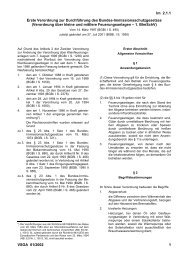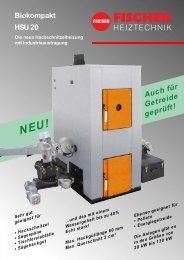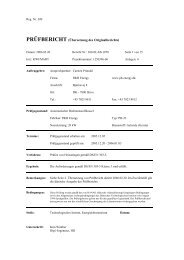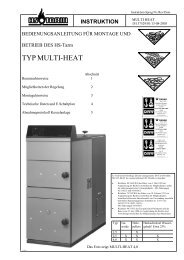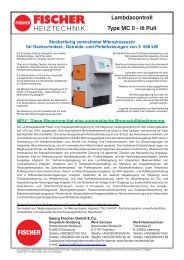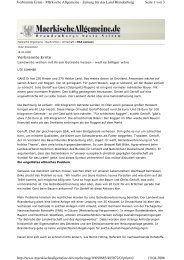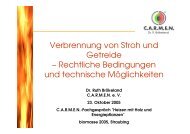Development of 0.5 MWe Scale DeSOX-DeNOX ... - Getreideheizung
Development of 0.5 MWe Scale DeSOX-DeNOX ... - Getreideheizung
Development of 0.5 MWe Scale DeSOX-DeNOX ... - Getreideheizung
You also want an ePaper? Increase the reach of your titles
YUMPU automatically turns print PDFs into web optimized ePapers that Google loves.
2. High power pulse generator<br />
Taking account <strong>of</strong> the previous test results [4, 8], the optimal condition for a pulse<br />
generator requires that it should be able to generate a pulse voltage <strong>of</strong> 150 kV peak,<br />
pulse current up to 10 kA peak, a pulse width <strong>of</strong> 500 ns at FWHM (full width at half<br />
maximum), and approximately 800 J per pulse. It must, moreover, run continuously at<br />
pulse repetition rates between 100 pps (pulse per second) and 300 pps, and have at least<br />
a maintenance interval <strong>of</strong> 6 months as a baseline. The lifetime and reliability <strong>of</strong> the<br />
system are extremely important as downtime for maintenance affects plant availability,<br />
either scheduled or unscheduled.<br />
It is obvious that one <strong>of</strong> the key components for a pulse generator to meet those<br />
specifications is the switch system. Some <strong>of</strong> switches are available commercially for<br />
pulse power applications. However, a magnetic switch that has solid-state and nonlinear<br />
inductance characteristics is the only one to achieve completely the above specifications<br />
because other switches, in general, have poor lifetimes and higher cost levels [5,9].<br />
Based on Melville pulse compression networks [10], the MPC (Magnetic pulse<br />
compression) method using saturable reactors and pulse forming capacitors is a useful<br />
technique to make high power pulses having a narrow width and a steep rise front. The<br />
main features <strong>of</strong> the MPC type pulse generator are a long lifetime and high reliability<br />
because <strong>of</strong> its solid-state properties. These are very important to the industrial<br />
applications.<br />
Fig. 2 shows a simplified circuit <strong>of</strong> the pulse generator developed with a high voltage<br />
DC power supply (Maxwell model CCDS850P1480, 4 units paralleled), MPC switches<br />
(Metglas 2605CO), and a pulse transformer. The use <strong>of</strong> a pulse transformer and a<br />
constant current capacitor charging type HVDC power supply makes the generator<br />
simple, reliable, and efficient. Especially a DC power supply adopting the above type<br />
can eliminate much <strong>of</strong> the energy loss assessed in conventional resistive charging <strong>of</strong> an<br />
initial stage capacitor with a constant voltage power supply.<br />
The operation principle <strong>of</strong> Fig. 2 is as follows. First, the capacitor C 0 is charged by<br />
the HVDC power supply up to 50 kVmax. Charged energy in C 0 is transferred to C 1<br />
through L 0 , the charging inductor, by switching <strong>of</strong> SW 0 (thyratron, EEV model<br />
CX1525A) during 3 µs. After charging C 1 , MPC1 is saturated and the energy stored in<br />
C 1 is transferred to C2 through the pulse transformer. The output pulse from C 2 is<br />
compressed again by MPC2 (500 ns, F<br />
HV DC<br />
Charger<br />
50 kVmax<br />
32 kJ/s<br />
+<br />
R1<br />
50Ω<br />
D1<br />
R2<br />
50Ω<br />
C0<br />
160nF<br />
SW0<br />
L0<br />
11.4µH<br />
MPC 1<br />
C1<br />
160nF<br />
1:4<br />
MPC 2<br />
C2<br />
10nF<br />
To Osc.<br />
To Osc.<br />
Fig 2. Schematic circuit diagram <strong>of</strong> the MPC pulse generator.







